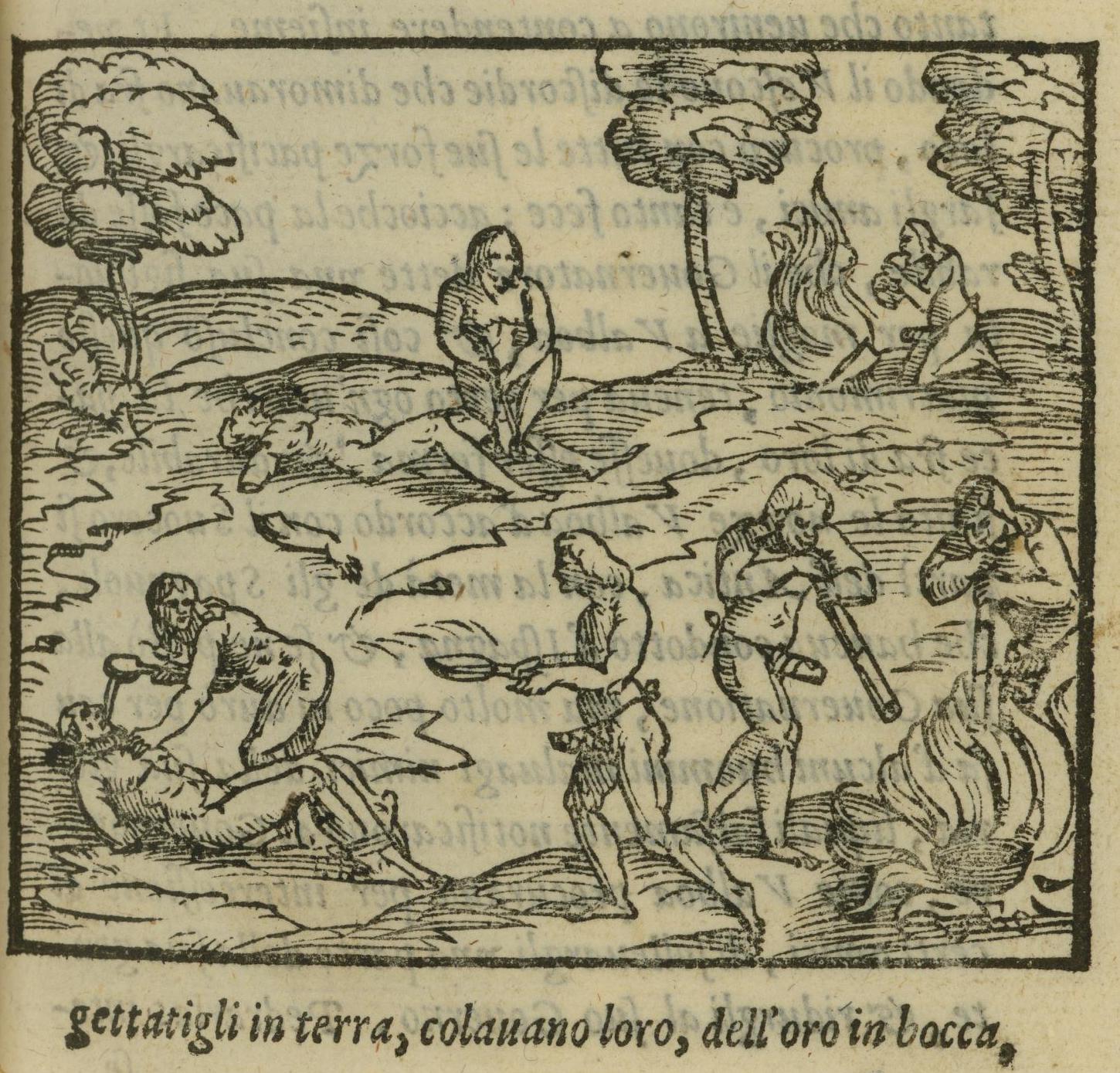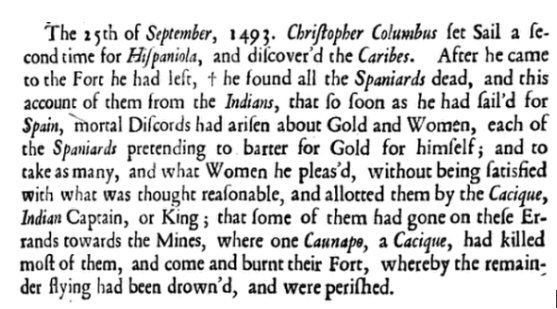Decolonizing the Archive: Indigenous People and Survivance
“Survivance is an active resistance and repudiation of dominance, obtrusive themes of tragedy, nihilism, and victimry. The practices of survivance create an active presence...Native stories are the sources of survivance”
- Gerald Vizenor
“Most writers and theorists tell us that blacks had to be brought into the Caribbean because its Indigenous peoples disappeared or were too weak to work on plantations. This uncritical argument, that the disappearance of Indigenous peoples was the reason for the introduction of black, and later indentured labor, hinders us from seeing how these two causalities are in fact irrevocably yoked.”
- Shona Jackson
Colonial Representation of Indigenous Peoples
Christopher Columbus, the first European pillager of the West Indies, depicts the Indigenous peoples of the Caribbean as savage and ignorant creatures. He writes, "They all go completely naked, even the women, though I saw but one girl. All whom I saw were young, not above thirty years of age, well made, with fine shapes and faces; their hair short, and coarse like that of a horse's tail...I showed them swords which they grasped by the blades, and cut themselves through ignorance" (October 11th, 1492). Similar sentiments are expressed by Oviedo de Valdez, Richard Ligon, Hans Sloane, and other European colonial authors who attempted to represent the Americas to readers residing in Europe.
Stories and accounts such as the one above dominate the texts found in colonial archives. Because of this paradigm, a central question for our project is: how can we narrate stories of Native survivance and of resistance to colonizers like Sloane? If, as Gerald Vizenor explains, Native stories are the sources of survivance, where can we locate these stories in the colonial Caribbean archive? The ECDA seeks to make use of the affordances of the digital archive to remix the texts of the conquered to extract stories of Indigenous survival and resistance.
We are currently creating an Embedded Indigenous Narratives collection (coming soon) to foreground Indigenous narratives of survivance in the Caribbean. Please contact us if you would like to contribute to this work.
Visual Representation

Visual and Textual Representation
In addition to written representations of Indigenous peoples, many of the texts collected in the ECDA also contain images of Indigenous peoples of the Caribbean. Often, however, both textual and visual representations tell us more about the cultures that did the representing than about the cultures being represented. In the image to the left, for instance, we see a vivd representation of the widespread European fear that Indigenous Caribbeans engaged in cannibalism. Browse our archival collection to learn more about the ways in which colonial settlers represented Native Caribbean peoples.
The Colonial Gaze and the Decolonial Archive
The Colonial Gaze
This history of Indigenous peoples of the Caribbean, as told by European colonial authors such as Hans Sloane, Bryan Edwards, and John Gabriel Stedman, is a story of absence and erasure, of enslavement and violence. See, for example, the passage to the right excerpted from the Introduction to A Voyage to the Islands Madera, Barbados, Nieves, S. Christophers and Jamaica (1707) by Hans Sloane, a colonial naturalist and physician. Sloane's avid natural history collecting led to the founding of the British Museum and was partially supported with funds derived from the Caribbean slave economy. Sloane's wife, Elizabeth Langley Rose, came from a family of sugar planters in Jamaica, and she supported Sloane's work as a naturalist and collector. As the passage cited here indicates, Sloane’s history of the Indigenous Caribbean is one in which Native peoples commit acts of violence against Spanish colonizers, and in which Indigenous women are important commodities in this violent history.

